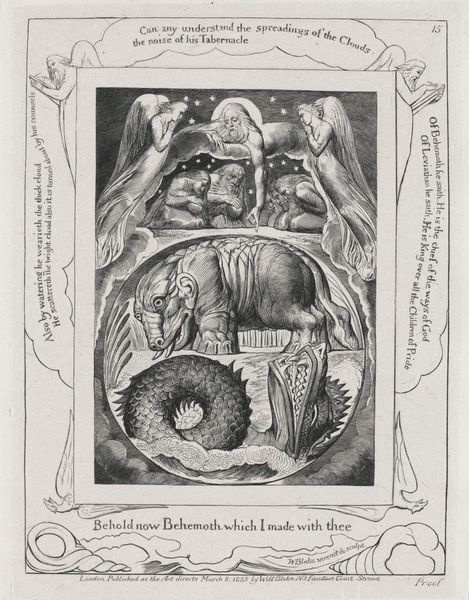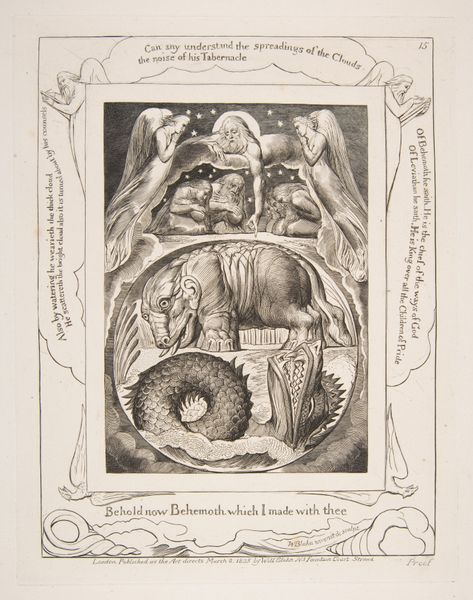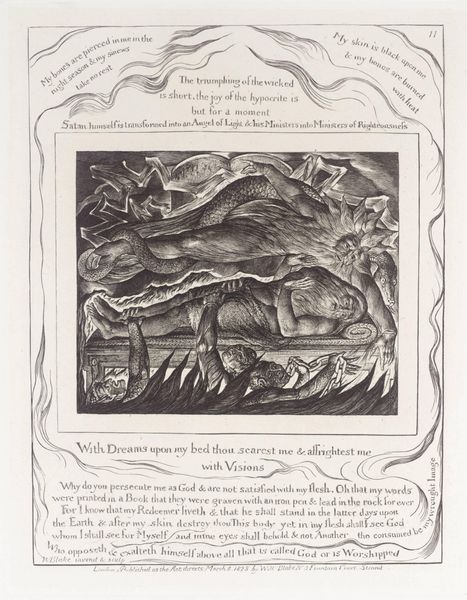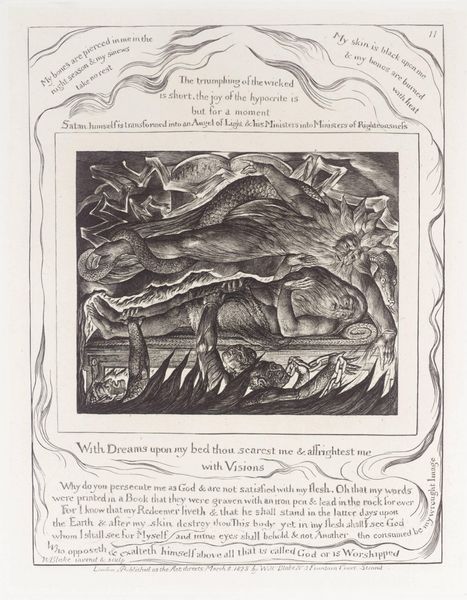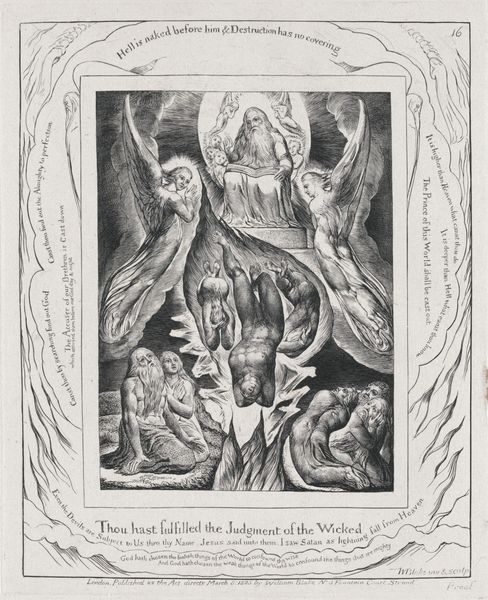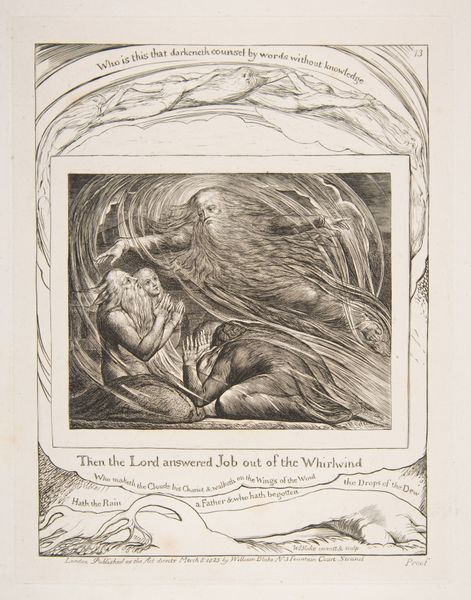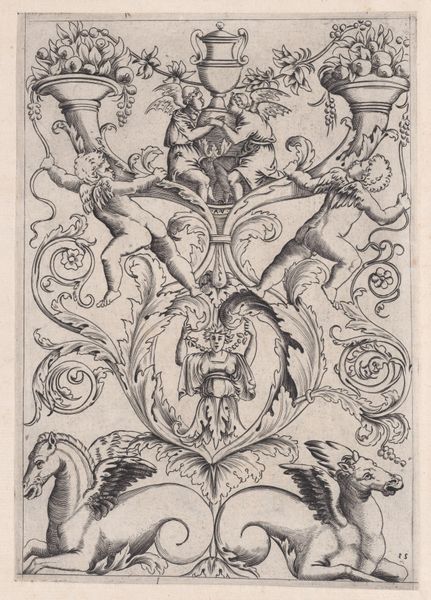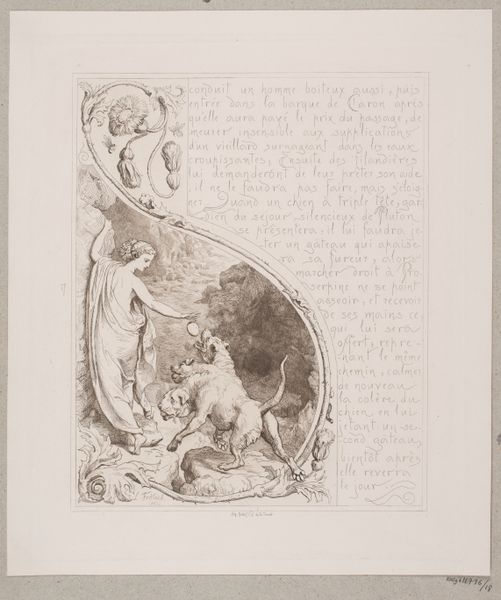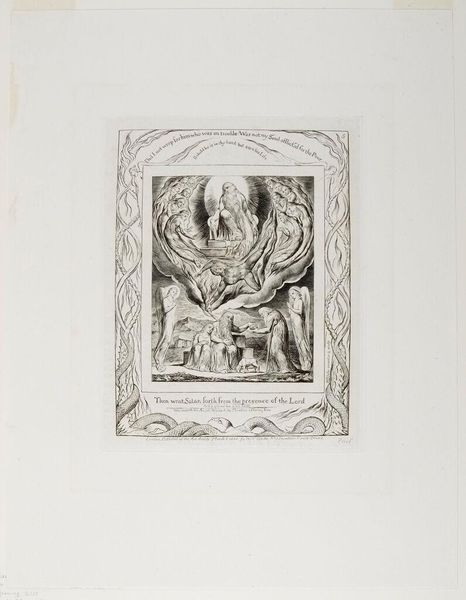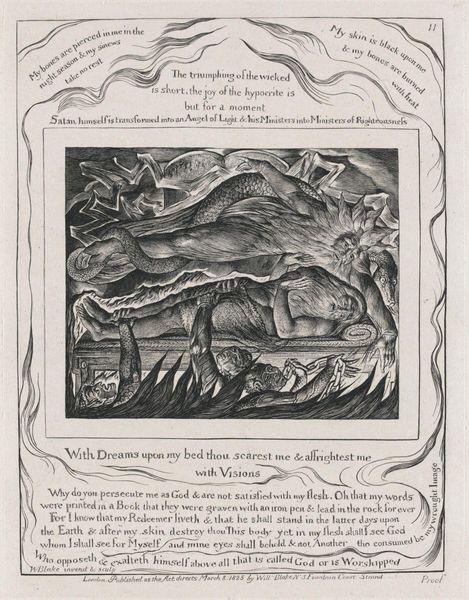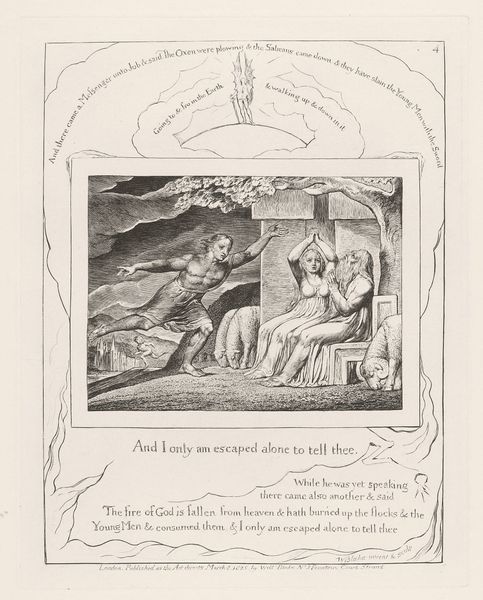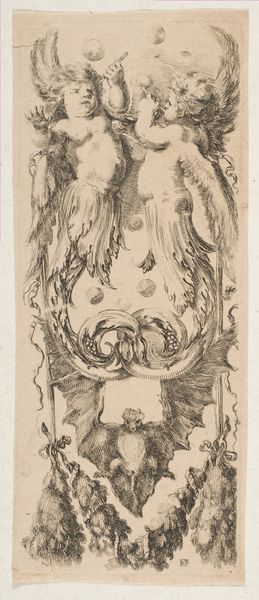
print, engraving
#
narrative-art
# print
#
figuration
#
romanticism
#
history-painting
#
engraving
Dimensions: 8 1/2 x 6 5/8 in. (21.59 x 16.83 cm) (sheet, mount)
Copyright: Public Domain
William Blake etched "Behold now Behemoth which I made with thee" using engraving in 1825. Dominating the scene are two primordial creatures: Behemoth, an enormous elephantine beast, and Leviathan, a serpentine sea monster. These figures, drawn from the Book of Job, symbolize the untamed forces of creation. The Behemoth embodies the raw, earthly power, akin to ancient Mesopotamian depictions of bulls signifying strength, while Leviathan, lurking beneath the waters, recalls the chaos dragons of myth. Observe how the divine figures above seem both awed and troubled by these entities, reflecting a tension between divine order and primal energy. Consider how the Leviathan, as a symbol, has evolved: from a creature of pure chaos to a symbol of overwhelming power, even finding its way into political allegories. These images, charged with symbolic weight, tap into our collective unconscious, stirring primal fears and fascinations. The cyclical progression of these symbols across cultures allows them to resurface, perpetually evolving.
Comments
minneapolisinstituteofart almost 2 years ago
⋮
Here, God explains the mystery of the incessant warfare in the human world. He reaches down through the cloud-barrier with his left hand to indicate Behemoth and Leviathan. These two creatures exist in man himself; God proclaims to Job "Behold now Behemoth which I made with thee." (Job xl: 15-24; lxi: 1-34). The cloud-barrier of Job's world includes the sphere in which they exist; it is a picture of the subconscious, the unredeemed portion of psyche, which the bulrushes identify as Egypt-the unredeemed portion of mankind. These are the terrible forces within man, against which he seems helpless: "the War by Sea enormous and the War by Land astounding, erecting pillars in the deepest Hell to reach the heavenly arches" (Blake, Jerusalem, 91: 39-42). They also function as a means of God's providence. Behemoth is "the chief ways of God": warfare of the spirit is one of the chief joys of Eternity, though when materialized on earth it is rendered deadly (Milton 34: 50-52; 35: 2-3). Leviathan is King over all the Children of Pride-that is, over all unredeemed mankind. His name means "coiled," and therefore he is depicted as having a huge spiral, representing the everlasting repetitions in the round of nature. At the upper corners, angels write the laws of the universe; at the lower corners are the eagles which Urizen sends forth in his work of creation (The Four Zoas ii: 150). Below are the emptied shells of the mortal bodies which are grown by man's spirit and then abandoned on the margin of the Sea of Time and Space.
Join the conversation
Join millions of artists and users on Artera today and experience the ultimate creative platform.
